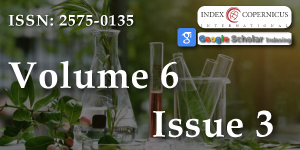Flashes of UV-C light are perceived by UVR8, the photoreceptor of UV-B light
Main Article Content
Abstract
Light is an important regulator of plant morphogenesis and plant-pathogen interactions via specific photoreceptors and signaling pathways. Besides visible light, other electromagnetic radiations may play roles, notably ultraviolet (UV) light. The UV part of the electromagnetic spectrum includes UV-A (315 nm - 400 nm), UV-B (280 nm - 315 nm) and UV-C radiations (200 nm - 280 nm). UV-B and UV-C have been reported to increase plant resistance to plant pathogens after the UV perception and signaling stages. The perception of UV-B radiation is achieved by the dimer protein UVR8 (UV RESISTANCE LOCUS 8). Even though the action spectrum of this photoreceptor overlaps in the UV-C domain, it has never been formally demonstrated that UVR8 could also act as a photoreceptor of UV-C light. We provide here original observations showing that UVR8 can indeed perceive UV-C light provided that the latter is in the form of flashes (1s) and not continuous illuminations (the 60s). Our observations also show that the response of UVR8 to flashes of UV-C light is dose-dependent. They could explain why flashes of UV-C light are more effective for stimulating plant defenses than continuous illuminations for the same amount of energy delivered to plants (J/m2). Eventually, our observations support ongoing trials that aim at using UV-C light as an environmental-friendly plant resistance inducer in field conditions.
Article Details
Copyright (c) 2022 Aarrouf J, et al.

This work is licensed under a Creative Commons Attribution 4.0 International License.
The Journal of Plant Science and Phytopathology is committed in making it easier for people to share and build upon the work of others while maintaining consistency with the rules of copyright. In order to use the Open Access paradigm to the maximum extent in true terms as free of charge online access along with usage right, we grant usage rights through the use of specific Creative Commons license.
License: Copyright © 2017 - 2025 |  Open Access by Journal of Plant Science and Phytopathology is licensed under a Creative Commons Attribution 4.0 International License. Based on a work at Heighten Science Publications Inc.
Open Access by Journal of Plant Science and Phytopathology is licensed under a Creative Commons Attribution 4.0 International License. Based on a work at Heighten Science Publications Inc.
With this license, the authors are allowed that after publishing with the journal, they can share their research by posting a free draft copy of their article to any repository or website.
Compliance 'CC BY' license helps in:
| Permission to read and download | ✓ |
| Permission to display in a repository | ✓ |
| Permission to translate | ✓ |
| Commercial uses of manuscript | ✓ |
'CC' stands for Creative Commons license. 'BY' symbolizes that users have provided attribution to the creator that the published manuscripts can be used or shared. This license allows for redistribution, commercial and non-commercial, as long as it is passed along unchanged and in whole, with credit to the author.
Please take in notification that Creative Commons user licenses are non-revocable. We recommend authors to check if their funding body requires a specific license.
Charles MT, Mercier J, Makhlouf J, and Arul J. Physiological basis of UV-C-induced resistance to Botrytis cinerea in tomato fruit: I. Role of pre- and post-challenge accumulation of the phytoalexin-rishitin. Postharvest Biol. Technol. 2008; 47: 10-20.
Ouhibi C, Attia H, Nicot P, Lecompte F, Vidal V, Lachâal M, Urban L, and Aarrouf J. Effects of nitrogen supply and of UV-C irradiation on the susceptibility of Lactuca sativa L to Botrytis cinerea and Sclerotinia minor. Plant Soil. 2015; 393: 35-46.
Urban L, Charles F, de Miranda MRA, Aarrouf J. Understanding the physiological effects of UV-C light and exploiting its agronomic potential before and after harvest. Plant Physiol Biochem. 2016 Aug;105:1-11. doi: 10.1016/j.plaphy.2016.04.004. Epub 2016 Apr 4. PMID: 27064192.
Forges M, Vàsquez H, Charles F, Sari, DC, Urban L, Lizzi Y, Bardin M, Aarrouf J. Impact of UV-C radiation on the sensitivity of three strawberry plant cultivars [Fragaria x ananassa) against Botrytis cinerea. Sci. Hortic. 2018; 240: 603-613.
Vàsquez H, Ouhibi C, Forges M, Lizzi Y , Urban L, Aarrouf J. Hormetic doses of UV-C light decrease the susceptibility of tomato plants to Botrytis cinerea infection. J. Phytopathol. 2020; 168: 524-532.
Vanhaelewyn L, Van Der Straeten D, De Coninck B, Vandenbussche F. Ultraviolet Radiation From a Plant Perspective: The Plant-Microorganism Context. Front Plant Sci. 2020 Dec 15;11:597642. doi: 10.3389/fpls.2020.597642. PMID: 33384704; PMCID: PMC7769811.
Aarrouf J, Urban L. Flashes of UV-C light: An innovative method for stimulating plant defences. PLoS One. 2020 Jul 9;15[7):e0235918. doi: 10.1371/journal.pone.0235918. PMID: 32645090; PMCID: PMC7347194.
Ledermann L, Daouda S, Gouttesoulard C, Aarrouf J, Urban L. Flashes of UV-C Light Stimulate Defenses of Vitis vinifera L. 'Chardonnay' Against Erysiphe necator in Greenhouse and Vineyard Conditions. Plant Dis. 2021 Aug;105[8):2106-2113. doi: 10.1094/PDIS-10-20-2229-RE. Epub 2021 Sep 15. PMID: 33393363.
Jiang L, Wang Y, Olof Björn L, He JX, Li S. Sensing of UV-B radiation by plants. Plant Signal Behav. 2012 Aug;7[8):999-1003. doi: 10.4161/psb.20815. Epub 2012 Jul 3. PMID: 22751358; PMCID: PMC3474703.
Kaiserli E, Jenkins GI. UV-B promotes rapid nuclear translocation of the Arabidopsis UV-B specific signaling component UVR8 and activates its function in the nucleus. Plant Cell. 2007 Aug;19[8):2662-73. doi: 10.1105/tpc.107.053330. Epub 2007 Aug 24. PMID: 17720867; PMCID: PMC2002606.
Kapuscinski J. DAPI: a DNA-specific fluorescent probe. Biotech Histochem. 1995 Sep;70[5):220-33. doi: 10.3109/10520299509108199. PMID: 8580206.

